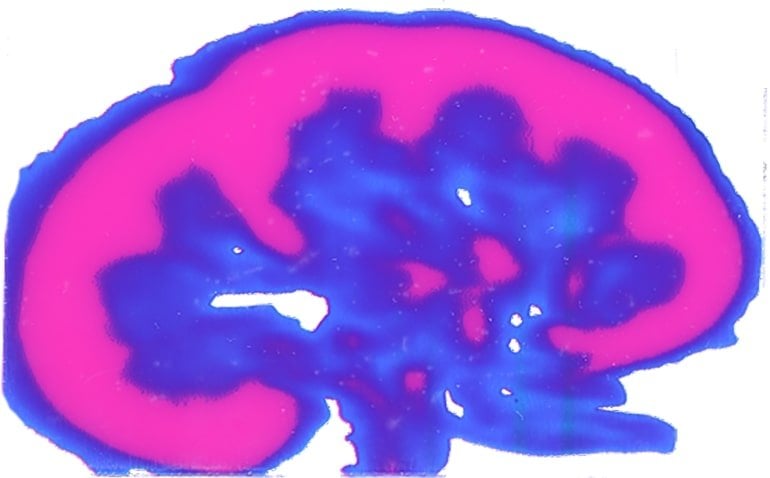Background
Chemotherapy plus anti-HER2 therapy is the mainstay systemic treatment for patients with HER2-positive early breast cancer.1–3 Despite additional anti-HER2 targeted therapies entering clinical practice, trastuzumab remains the standard of care for all patients.1–3 In patients with node-negative small tumors, chemotherapy burden can be de-escalated by administering weekly paclitaxel for 3 months and concurrent trastuzumab for 1 year.4
Considering its major negative impact on patients’ quality of life, developing treatment-induced premature ovarian insufficiency (POI) is a crucial age-related issue to be discussed with all premenopausal women.5,6 Currently, treatment-induced POI is mostly defined based on amenorrhea after anticancer therapies.7 However, irrespective of menstrual cycle perturbation during treatment and restoration after its completion, anticancer agents may cause direct damage to the primordial follicle pool (ie, the ovarian reserve) that can lead to fertility-related problems and early menopause.5,6 Therefore, the current definition of treatment-induced POI is considered suboptimal and other parameters, including ovarian reserve markers and posttreatment pregnancies, may more properly reflect the impact of anticancer therapies on women’s ovarian reserve and fertility potential.5,6 Produced by granulosa cells of growing follicles, antimüllerian hormone (AMH) is considered an established biomarker of ovarian reserve widely used in women undergoing in vitro fertilization procedures.8,9 It is more sensitive than other hormonal markers and has the advantage of showing little variation during regular menses.8–10 In patients with cancer, AMH measurement during systemic therapies is considered a promising biomarker for quantifying treatment-induced gonadotoxicity, thus aiding in the diagnosis and prediction of POI.11
With all newly diagnosed premenopausal women, discussing gonadotoxicity risk is the starting point for proper oncofertility counseling.5,6,12,13 However, although the risk and mechanisms of gonadotoxicity with anthracycline/cyclophosphamide-based chemotherapy and their impact on patients’ ovarian reserve are well established,14–16 the gonadal effect of anti-HER2 targeted agents remains largely unknown, and limited conflicting evidence exists for taxanes.5,6
In the NeoALTTO (BIG 1-06) trial (ClinicalTrials.gov identifier: NCT00553358), patients with HER2-positive early breast cancer received neoadjuvant treatment with anti-HER2 therapy alone (trastuzumab and/or lapatinib) for 2 cycles (6 weeks total) and then together with weekly paclitaxel for 12 cycles before surgery.17 Considering that AMH level can be an early indicator of gonadotoxicity, with a significant decline in its values within 2 weeks after treatment initiation,18,19 the NeoALTTO trial represented a unique setting to explore for the first time the acute gonadal impact of anti-HER2 therapy alone and in combination with weekly paclitaxel in patients not previously exposed to anthracycline/cyclophosphamide-based chemotherapy.
Patients and Methods
Study Design and Participants
Details of the NeoALTTO trial design were previously reported.17 Briefly, NeoALTTO was a multicenter, open-label, randomized phase III neoadjuvant study in female patients with HER2-positive early breast cancer. Eligible patients were randomly assigned to receive anti-HER2 therapy alone (lapatinib or trastuzumab or their combination) for 6 weeks followed by the addition of weekly paclitaxel for 12 weeks before surgery. After surgery, 3 cycles of 5-fluorouracil + epirubicin + cyclophosphamide was administered followed by 34 additional weeks of the same anti-HER2 therapy received in the neoadjuvant phase.
The present analysis included only female patients aged ≤45 years and with known premenopausal status at randomization, with available serum samples at baseline and at least at 1 additional time point during the neoadjuvant treatment phase.
The NeoALTTO trial was approved by the independent review boards of participating centers, and all included patients provided written informed consent before study entry. The TransALTTO and NeoALTTO Steering Committees approved the present analysis.
Study Procedures
As per the NeoALTTO trial design, all included patients underwent prospective serum sample collection at predefined specific time points. For patients eligible for the present project, serum samples at the following time points were requested for AMH testing: screening/baseline (ie, before administration of any anticancer treatment), week 2 (ie, the “biological window” of anti-HER2 therapy alone), and surgery (ie, the end of 12 cycles of weekly paclitaxel + anti-HER2 therapy and before starting adjuvant chemotherapy).
All frozen serum samples were transferred to the Biobank of Gynecology of Erasmus at the Research Laboratory on Human Reproduction, Université Libre de Bruxelles (ULB) in Brussels, Belgium. Central AMH testing was performed with the Roche Elecsys AMH Plus assay according to manufacturer instructions. The limit of detection was 0.01 ng/mL (0.07 pmol/L).
Study Objectives and Variables of Interest
The primary objective of this analysis was to assess the acute gonadotoxicity of anti-HER2 agents alone or in combination with taxane-only chemotherapy using serum AMH levels as a measure of treatment impact on women’s ovarian reserve.
As secondary objectives, we investigated the impact of the different anti-HER2 agents and of patient age and baseline ovarian reserve (ie, AMH levels) on treatment-induced acute gonadotoxicity.
Statistical Analysis
Sample size calculations and statistical assumptions for the primary endpoint of the NeoALTTO trial were previously described.17 The present analyses focusing on treatment-induced acute gonadotoxicity measured by AMH levels were not preplanned in the protocol and the power of the statistical analyses was not prespecified. Given the highly skewed distribution of AMH levels and the descriptive intent of this analysis, data were summarized using a nonparametric statistical approach. Medians and interquartile ranges (IQRs) were used to summarize AMH levels at each time point. Scatter plots and box plots were used to present AMH dynamics during treatment.
The cumulative variation between AMH levels after 2 weeks and before surgery with respect to AMH levels at baseline was calculated according to the following formula19:
ΔBX=(AMHX−AMHB)/(AMHB−0.0098)*100,
where AMHB is at baseline, AMHX is at each of the 2 other time points, and 0.0098 is the lowest AMH observed value. The difference between the 2 ΔBX was calculated.
The analyses were first conducted in the overall study population, irrespective of treatment arm. Then, the same analyses were conducted by treatment arm (lapatinib vs trastuzumab vs trastuzumab + lapatinib), by patient age (as categorical variable: <35 vs 35–40 vs 41–45 years) and by pretreatment AMH levels (as categorical variable: first vs second vs third tertile). Kruskal-Wallis tests were used for group comparison at each time point. To compare AMH at 2 different time points, the Wilcoxon matched-pairs signed rank test was applied. The Skillings-Mack test was used to perform an overall comparison between AMH values at each time point.20
The impact of age and pretreatment AMH levels as continuous variables on changes in AMH values during therapy was assessed via the Spearman correlation coefficient, and the Lowess method was applied to visualize the trends.21
Statistical analysis was conducted (M. Bruzzone, M. Ceppi) using Stata, Version 13.1 (StataCorp LP). Statistical tests were 2-sided, and P values <.05 were considered statistically significant.
Results
Of 455 women randomized in the NeoALTTO trial between January 2008 and May 2010, 139 were premenopausal and aged ≤45 years at randomization. Serum samples were not available or could not be tested for AMH level at baseline in 9 patients, resulting in a final cohort of 130 patients (Figure 1).

Figure 1.
Study flow of participants.
Abbreviation: AMH, antimüllerian hormone.
aTesting for AMH, with prespecified time points of screening/baseline (ie, before administration of any anticancer treatment), week 2 (ie, the “biological window” of anti-HER2 therapy alone), and surgery (ie, the end of 12 cycles of weekly paclitaxel + anti-HER2 therapy and before starting adjuvant chemotherapy).
Citation: Journal of the National Comprehensive Cancer Network 21, 1; 10.6004/jnccn.2022.7065
Median age was 38 years (IQR, 33–42 years), and 86 (66.2%) patients were aged ≤40 years (Table 1). A total of 41 (31.5%), 45 (34.6%), and 44 (33.9%) patients were randomized to the trastuzumab, lapatinib, or trastuzumab + lapatinib arms, respectively.
Table 1.
Patient and Tumor Characteristics

AMH values differed significantly at the 3 time points (P<.001; Figure 2A). At screening/baseline, median AMH levels were 1.29 ng/mL (IQR, 0.56–2.62 ng/mL). After 2 weeks of anti-HER2 treatment alone, a small reduction in AMH levels was observed with a median value of 1.10 ng/mL (IQR, 0.45–2.09 ng/mL; P<.001). At surgery, after paclitaxel and anti-HER2 therapy, a major significant decline in AMH levels was observed with a median value of 0.01 ng/mL (IQR, 0.01–0.03 ng/mL; P<.001).

Figure 2.
AMH dynamic in the whole study cohort. (A) Evolution of serum AMH levels at the 3 time points (baseline, week 2, and surgery). (B) Cumulative variation of AMH (week 2 vs baseline, surgery vs baseline, and surgery vs week 2).
Abbreviations: AMH, antimüllerian hormone; H0, null hypothesis.
Citation: Journal of the National Comprehensive Cancer Network 21, 1; 10.6004/jnccn.2022.7065
Overall, the percentages of AMH change at week 2 and at surgery differed significantly with respect to baseline (P<.001; Figure 2B). Compared with baseline values, the median cumulative decrease in AMH levels was −12.5% (IQR, −37.6% to 12.4%) at week 2 and −99.9% (IQR −100.0% to −98.7%) at surgery. Compared with week 2 values, the median cumulative decrease in AMH levels at surgery was −80.7% (IQR, −109.5% to −54.8%).
There was no significant difference between treatment arms (trastuzumab vs lapatinib vs trastuzumab + lapatinib) either in the degree of reduction in AMH levels (Figure 3A, supplemental eTable 1, available with this article at JNCCN.org) or in the degree of cumulative decrease in AMH levels (Figure 3B, supplemental eTable 2) at the different time points.

Figure 3.
AMH dynamic by treatment arm (lapatinib, lapatinib + trastuzumab, and trastuzumab). (A) Evolution of serum AMH levels at the 3 time points (baseline, week 2, and surgery). (B) Cumulative variation of AMH (week 2 vs baseline, surgery vs baseline, and surgery vs week 2).
Abbreviations: AMH, antimüllerian hormone; Lap, lapatinib; Tras, trastuzumab.
Citation: Journal of the National Comprehensive Cancer Network 21, 1; 10.6004/jnccn.2022.7065
At screening/baseline, median AMH levels were 2.76 ng/mL (IQR, 1.40–4.07 ng/mL), 1.33 ng/mL (IQR, 0.95–2.25 ng/mL), and 0.52 ng/mL (IQR, 0.12–1.01 ng/mL) in patients aged <35, 35–40, and 41–45 years, respectively. AMH levels remained significantly different between age groups at all time points (P<.001; Figure 4A, supplemental eTable 3 and eFigure 1). A significant negative correlation was observed between age and AMH levels at baseline (r = −0.609; P<.001; supplemental eFigure 2A), at week 2 (r = −0.617; P<.001; supplemental eFigure 2B), and at surgery (r = −0.500; P<.001; supplemental eFigure 2C).

Figure 4.
AMH dynamic by age group (ages <35, 35–40, and 41–45 years). (A) Evolution of serum AMH level at the 3 time points (baseline, week 2, and surgery). (B) Cumulative variation of AMH (week 2 vs baseline, surgery vs baseline, and surgery vs week 2).
Abbreviation: AMH, antimüllerian hormone.
Citation: Journal of the National Comprehensive Cancer Network 21, 1; 10.6004/jnccn.2022.7065
The difference between age groups in the degree of reduction in AMH levels (P<.001; Figure 4B, supplemental eTable 4) and the negative correlation between age and degree of decrease in AMH levels (r = −0.326; P<.001; supplemental eFigure 3A–C) were significant only at surgery compared with baseline.
Based on pretreatment AMH levels, the cutoffs to distinguish between the 3 tertiles were <0.74, 0.74 to 1.98, and >1.98 ng/mL. AMH levels remained significantly different between AMH tertile groups at all time points (P<.001; Figure 5A, supplemental eTable 5). A significant positive correlation was observed between AMH tertile groups and AMH levels at week 2 (r = 0.91; P<.001; supplemental eFigure 4A) and at surgery (r = 0.54; P<.001; supplemental eFigure 4B).

Figure 5.
AMH dynamic by pretreatment AMH tertile groups (1st: <0.74; 2nd: 0.74–1.98; 3rd: >1.98). (A) Evolution of serum AMH level at the 3 time points (baseline, week 2, and at surgery). (B) Cumulative variation of AMH (week 2 vs baseline, surgery vs baseline, and surgery vs week 2).
Abbreviations: AMH, antimüllerian hormone; T, tertile.
Citation: Journal of the National Comprehensive Cancer Network 21, 1; 10.6004/jnccn.2022.7065
The difference between AMH tertile groups in the degree of reduction in AMH levels (P<.001; Figure 5B, supplemental eTable 6) and the positive correlation between AMH tertile groups and the degree of decrease in AMH levels (r = 0.297; P=.002; supplemental eFigure 5A–C) were significant only at surgery compared with baseline.
After repeating the main analyses by including only patients with all 3 samples (screening/baseline, week 2, and surgery) available for AMH testing (n=107), we observed consistent results (supplemental eTables 7–15).
A total of 7 patients had a pregnancy after treatment completion; all were aged <35 years at randomization. Median AMH levels were 3.22 ng/mL (IQR, 1.99–4.61 ng/mL) at screening/baseline, 2.74 ng/mL (IQR, 1.81–3.69 ng/mL) after 2 weeks of anti-HER2 treatment alone, and 0.04 ng/mL (IQR, 0.03–0.04 ng/mL) at surgery after paclitaxel and anti-HER2 therapy.
In patients without subsequent pregnancy and aged <35 years (n=35), median AMH levels were 2.55 ng/mL (IQR, 1.34–4.02 ng/mL) at baseline, 2.15 ng/mL (IQR, 1.24–3.43 ng/mL) at week 2, and 0.04 ng/mL (IQR, 0.01–0.08 ng/mL) at surgery. There were no significant differences in AMH levels at baseline (P=.16), week 2 (P=.463), or surgery (P=.610) in patients with or without subsequent pregnancy.
Discussion
This biomarker analysis of the NeoALTTO trial explored the short-term impact of anti-HER2 therapy alone and then combined with weekly paclitaxel on ovarian reserve measured by AMH levels in premenopausal women with HER2-positive early breast cancer not previously exposed to anthracycline/cyclophosphamide-based chemotherapy. We observed a small reduction in AMH levels during 2 weeks of anti-HER2 treatment alone and then a profound decline to almost undetectable levels in most patients after its combination with weekly paclitaxel. Although type of anti-HER2 targeted agent did not demonstrate any influence, age and pretreatment ovarian reserve had a major impact on the acute risk of treatment-induced gonadotoxicity. This analysis provides novel important information to share with premenopausal patients with breast cancer to improve their oncofertility counseling.
Defining the gonadotoxicity of targeted agents is considered an important unmet clinical need.5,6,22 In patients receiving mostly anthracycline/cyclophosphamide-based chemotherapy, adding trastuzumab to cytotoxic therapy did not seem to increase posttreatment amenorrhea risk,23,24 and no differences were observed when using trastuzumab and/or lapatinib.25 Low rates of posttreatment amenorrhea were observed in premenopausal women receiving trastuzumab and weekly paclitaxel.26 Although these studies suggested no apparent negative gonadotoxic impact of anti-HER2 therapy, all patients received prior or concurrent chemotherapy, and amenorrhea was used as a marker of gonadotoxicity. Hence, the actual impact of anti-HER2 targeted therapy on patients’ ovarian reserve remains undefined.5,6,22 Our data suggest that there could be a possible negative short-term gonadal effect of these agents. Considering that the EGFR signaling pathway has an important role in ovarian function,27 HER2 blockade could theoretically impact the rate of ovarian follicle activation and subsequent follicle growth.27,28 Most serum AMH derives from small antral follicles29; these findings indicate an effect of anti-HER2 blockade on the growing follicles. Due to the short treatment period of 2 weeks and the lack of a recovery period before starting chemotherapy, these data cannot inform on whether anti-HER2 blockade has effects on ovarian primordial follicles, which would translate into a long-term impact on ovarian function. Although significant, the observed reduction in AMH levels after 2 weeks of anti-HER2 treatment alone was small, in marked contrast to what has been observed with chemotherapy over this short 2-week window.18,19 No further reduction in AMH levels was observed with dual anti-HER2 blockade compared with trastuzumab and lapatinib given as single agents. Although it is possible that greater AMH declines would be seen with longer use of anti-HER2 therapy without chemotherapy, it is also plausible that any impact of anti-HER2 therapy on ovarian function may be transient and reversible (similar to the impact on cardiac ejection fraction). Thus, the gonadal effect of these anti-HER2 therapies may have limited clinical impact compared with the subsequent ovarian damage induced by chemotherapy. Considering that other anti-HER2 agents, including antibody–drug conjugates, have entered clinical practice or are in late stages of development in patients with HER2-positive early breast cancer, further efforts in this field are eagerly awaited.22,30
The risk of treatment-induced POI with cyclophosphamide and anthracyclines is well established.5,6 In most patients receiving these agents, AMH levels decline to undetectable values during treatment, with only partial and minimal recovery after therapy completion.19 More limited evidence exists to counsel women receiving taxane-based chemotherapy.14 Adding a taxane to anthracycline/cyclophosphamide-based chemotherapy is associated with a further increased risk of treatment-induced amenorrhea25,31 and a more profound short-term reduction in AMH levels,32 without apparent differences between docetaxel and paclitaxel.25 Compared with sequential regimens, similar rates of treatment-induced amenorrhea are expected with the use of docetaxel combined with cyclophosphamide or carboplatin (+ anti-HER2 therapy).25,33
Considering that weekly paclitaxel + trastuzumab is currently widely used in the clinic,4 the possibility of studying its gonadal impact without prior exposure to or coadministration of cyclophosphamide or anthracyclines is invaluable. In the APT trial, the observed rate of treatment-induced amenorrhea (28%) seemed to be lower than historically expected with cyclophosphamide/anthracycline-based chemotherapy regimens.26 Nevertheless, our analysis suggests that weekly paclitaxel alone has a major acute negative impact on women’s ovarian reserve, leading to a profound decline in AMH levels similar to what was expected with other known gonadotoxic chemotherapy agents. However, it is also possible that concurrent anti-HER2 therapy also contributed to this gonadotoxic effect. A future analysis within the Decrescendo trial (ClinicalTrials.gov identifier: NCT04675827) investigating the potential subsequent recovery of women’s ovarian reserve in the long term is awaited to further characterize the gonadotoxicity of single-agent taxane plus anti-HER2 therapy.
Age and baseline ovarian reserve measured by AMH levels are the most important patient-related factors influencing gonadotoxicity risk.5,6,11 These factors were confirmed in our analysis, showing a clear trend for a more profound reduction in AMH levels in older patients and those with the lowest baseline values. Nevertheless, all women (including the youngest and those with the highest baseline values) had a major acute reduction in AMH levels to very low/undetectable values after treatment using weekly paclitaxel and anti-HER2 agents. Therefore, although most young women with breast cancer, and particularly those aged <35 years and with optimal baseline ovarian reserve, are likely to retain ovarian function after chemotherapy completion and to conceive spontaneously,34,35 such treatments do cause ovarian damage. Hence, all women with breast cancer receiving systemic anticancer treatments should be considered at risk for treatment-induced gonadotoxicity and receive oncofertility counseling, including the possibility of undergoing fertility preservation strategies.5,6
In assisted reproductive technology, AMH is an excellent biomarker for predicting oocyte yield after ovarian stimulation.8,9 However, AMH is a poor predictor of pregnancy, because pregnancy can also occur in women with low/undetectable AMH levels.36 In our analysis, although information on AMH levels at conception or pregnancy attempts was not available, no apparent differences were observed in post-paclitaxel and anti-HER2 treatment values between patients with or without a subsequent pregnancy. Although AMH represents a biomarker of treatment-induced ovarian damage,11 it should not be regarded as a fertility test or a measure of reproductive potential, particularly during or soon after chemotherapy.
Among limitations, this analysis was not preplanned in the study protocol. There were no available serum samples after surgery, and therefore the potential recovery of AMH levels after treatment completion could not be assessed. No information on menstrual function after treatment was registered. Nevertheless, all samples were prospectively collected during study conduction at precise time points and their storage followed strict standard operating procedures. An automated and sensitive AMH assay, which offers improved precision compared with previously available assays, was used to centrally test all samples. The uniqueness of this analysis is represented by the possibility to study the gonadal impact of both anti-HER2 agents alone and weekly paclitaxel without the prior confounding effect of anthracycline/cyclophosphamide-based chemotherapy. Although data on previous gynecologic history, fertility treatments, or reproductive outcomes were not available, data on posttreatment pregnancies were collected, allowing us to obtain additional information on the impact of such therapies on patients’ fertility.
Conclusions
This NeoALTTO biomarker analysis in premenopausal patients with HER2-positive early breast cancer not previously exposed to anthracycline/cyclophosphamide-based chemotherapy provides evidence on the potential acute impact of anti-HER2 therapy alone (trastuzumab and/or lapatinib) and together with weekly paclitaxel on ovarian reserve measured by AMH levels. These data add to the body of knowledge in the oncofertility field that weekly paclitaxel + anti-HER2 therapy may cause gonadal damage, thus highlighting the importance of oncofertility counseling among premenopausal women receiving this regimen. Age and pretreatment ovarian reserve remain key determinants of treatment-induced gonadotoxicity risk.
Source: jnccn.org




